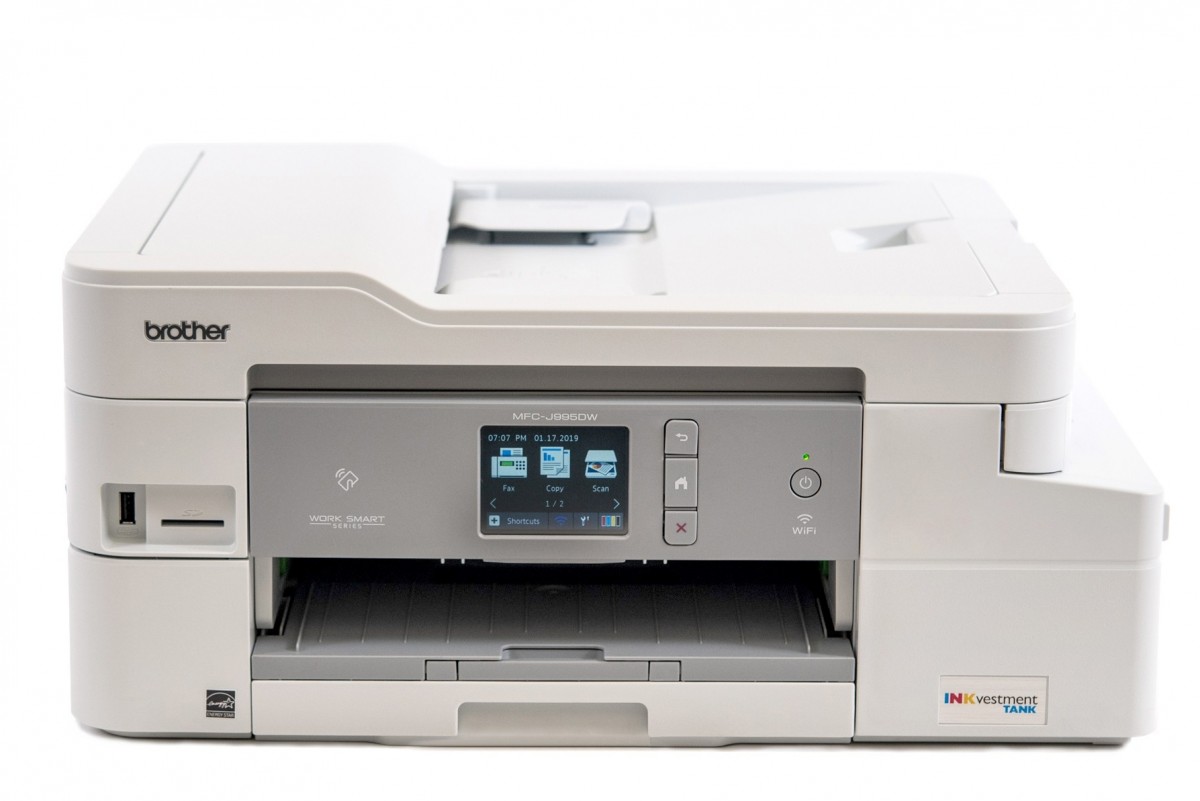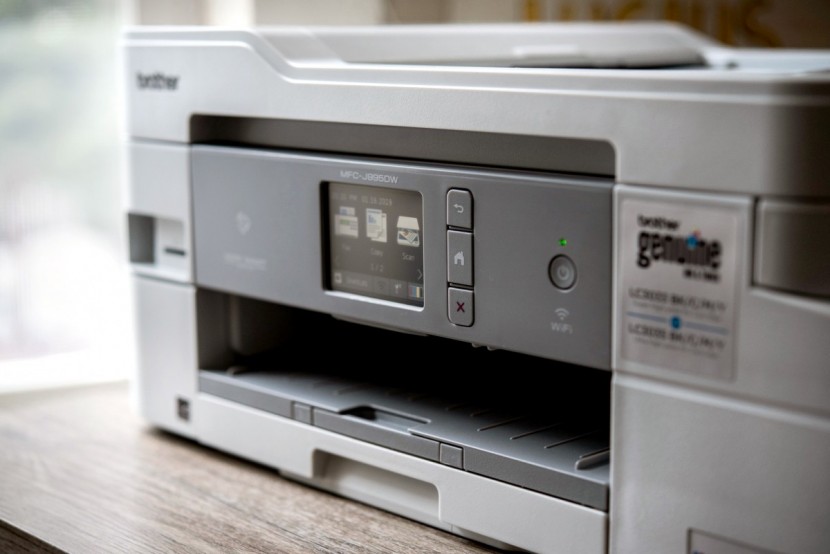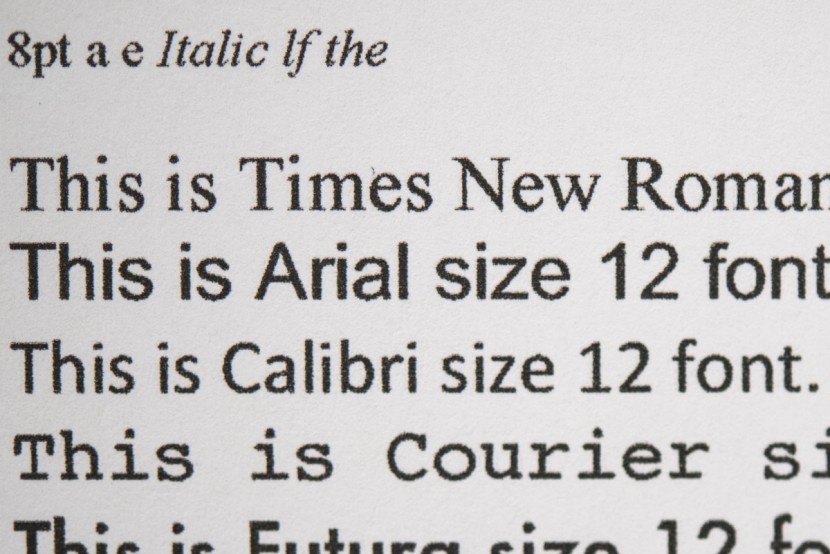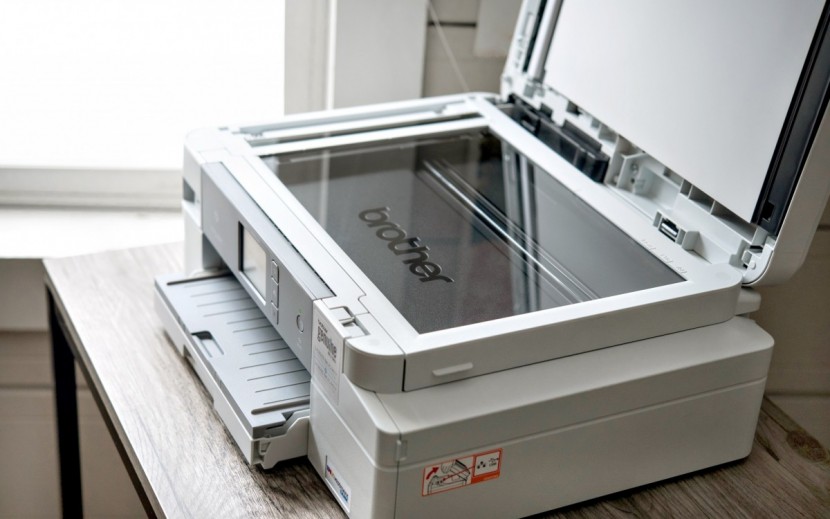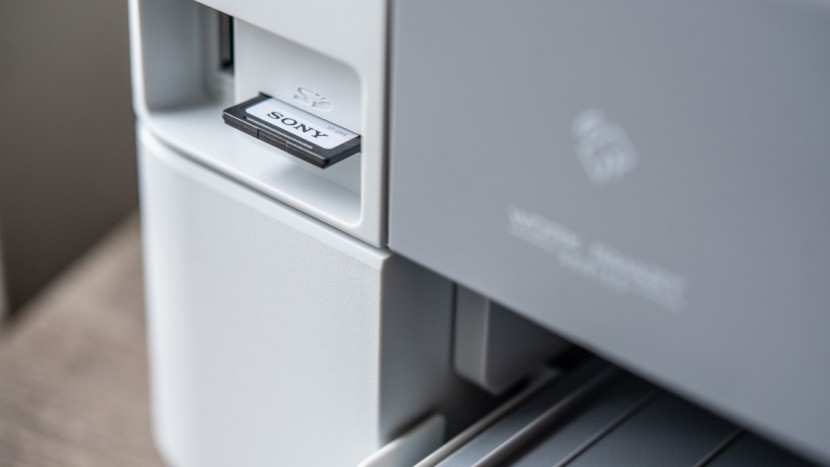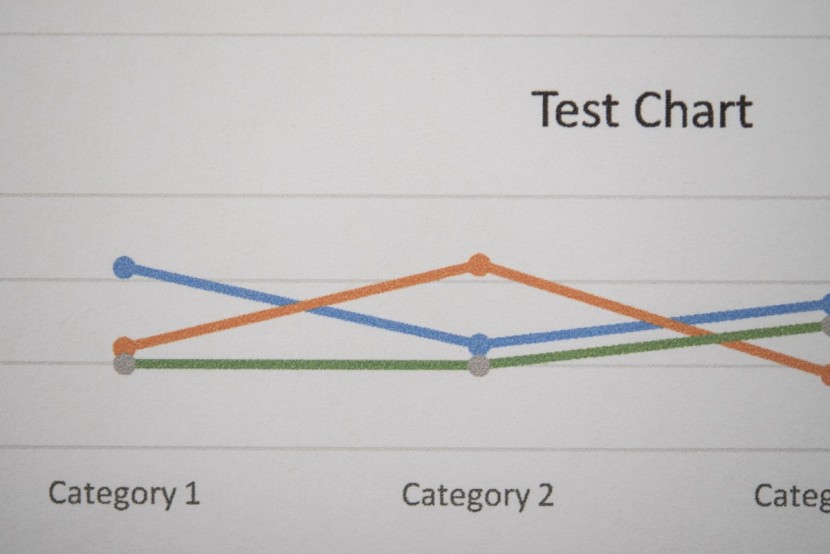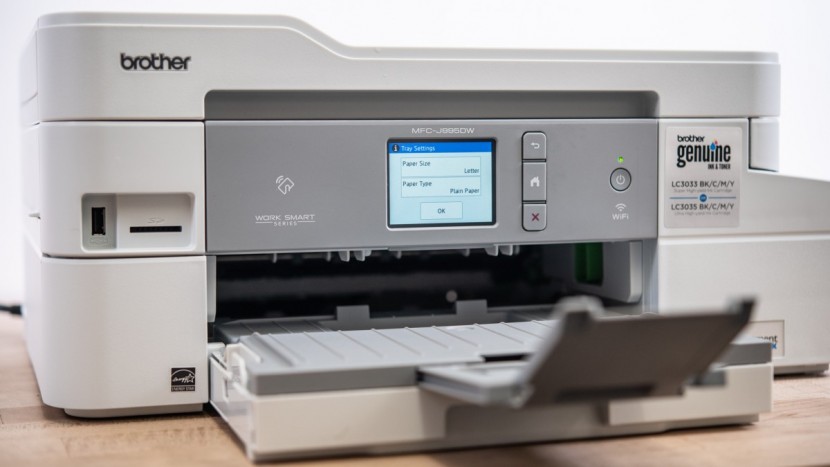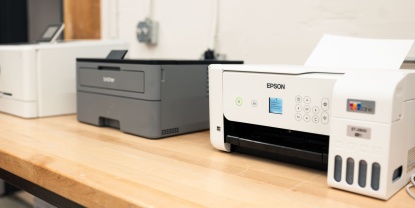Brother MFC-J995DW Review
Our Verdict
Our Analysis and Test Results
The Brother MFC-J995DW offers great graphics, economical operating costs, and all-in-one functionality for just $200. However, its text quality may not pass muster for those that frequently print in small fonts.
Stellar performance in our operating costs, user-friendliness, and graphics quality tests somewhat outweighed the Brother MFC-J995DW's poor showing in our text quality tests, resulting in a slightly above average overall score.
Text Quality
The MFC-J995DW's text bosts some impressive boldness but lacks a good bit of clarity, earning it one of the lowers scores in this metric.
Like most inkjets, the MFC-J995DW's text difficulties lie in creating a smooth line on the edges of characters, with ink blotches often bleeding over the edge, creating a blurry look. The MFC-J995DW is able to keep those blotches small enough that you probably won't really notice them when printing in size 12 fonts or above. However, those blotches make the text look quite shoddy in smaller sizes, especially when using italics.
If you're looking for an inkjet that can both print great looking graphics and their corresponding size 8 font cations, there unfortunately isn't a stellar option. Both the $200 Canon TS9120 and $100 HP OfficeJet 3830 can produce similar quality graphics and noticeably better text than the MFC-J995DW, but both also carry much more expensive ink costs. The best balance of all these attributes is likely the HP Color LaserJet Pro M254dw, but it costs $300 upfront and its graphics are a step below those of the MFC-J995DW.
Operating Cost
We were honestly surprised at the low ink costs of the MFC-J995DW, especially considering its traditionally ink-gulping inkjet pedigree. It provides one of the best values in the long run of any of the printers we've tested.
The MFC-J995DW is able to print black and white text pages for just $0.01 per page. The only other models we've tested that could get close to this figure are specialized laser like the Brother HLL8350CDW ($0.01/page) or the HP Color LaserJet Pro M254dw ($0.03/page). When it comes to color printing the MFC-J995DW is simialrly economical, spitting our graphs and charts for just $0.04 per page. This is the lowest such figure we've calculated, with the HP Color LaserJet Pro MFP M277dw's $0.07 rate being the next closest competitor.
Combine those rates with the MFC-J995DW's list price of $200 and assuming a 3-year lifespan, 2500 printed pages a year (with 20% of those being color) and you get an estimated lifetime cost of $320. That is again the lowest such such figure that we've calculated in our testing — in comparison, similarly performing inkjets like the Canon TS9120 and the HP OfficeJet 3830 posted figures of $860 and $820, respectively.
Ease of Use
The MFC-J995DW is one of the few printers we've encountered where we have very few complaints about its user experience. This earned it one of the highest scores in this metric.
This good user experience starts with the MFC-J995DW's large touchscreen display. An intuitive, versatile interface like this is the kind of thing you usually see on much more expensive models (like the $300 HP Color LaserJet Pro M254dw, for instance). We found this to be a very user-friendly platform for navigating the MFC-J995DW's various printing, scanning, copying, and faxing functions.
On top of the sleek interface, the MFC-J995DW offers a slew of convenient features, like the ability to scan to and print directly from Google Drive (and some other popular cloud services), mobile printing, and near field communication (NFC). This technology allows you to connect wireless devices to the printer simply by holding them close by and pressing a button, no fussing with passwords and drivers. Features like NFC are slowly becoming standard on printers, but as of now the MFC-J995DW is one of the most convenient examples of the technology we've found.
So, with all the love, why didn't the MFC-J995DW earn a perfect score in this metric? While we do really like the MFC-J995DW's user experience, in our testing it was not immune to the wireless connectivity problems inherent in so many other printers. While setup was a breeze, after a few days we did have to restart the printer in order to get it wirelessly talking to our laptops again. This shouldn't be counted as a huge knock, as we ran into these sorts of issues with every other wireless printer we've tested. At least the MFC-J995DW offers the option of hardwiring it to an ethernet connection.
Graphics/Photos
Printing graphs and charts are the MFC-J995DW's bread and butter. It produced some of the best color graphics in our tests.
The graphs we printed with the MFC-J995DW have bold, solid colors and crisp edges on every line and bar. In this aspect it was as good or better than every other model we tested, including much more expensive offerings like the $430 HP Color LaserJet Pro MFP M281fdw.
The MFC-J995DW can also print some reasonably good photos. In our tests it managed to render accurate skin tones and produce a reasonable amount of clarity. However, it can't match the quality of a proper photo printer. If you're looking for an inexpensive printer that can print both real photos on actual photo paper, as well as standard text pages on 8x11 sheets, we recommend the Canon TS9120.
Printing Speed
The MFC-J995DW's printing speed is about average. In our tests it spat out text pages at a rate of 9 per minute. This is definitely on the slower side of spectrum, but doesn't feel insanely slow unless you often print 10+ page documents.
Value
If you're looking for a reliable, multi-function inkjet that won't rack up ink costs, the Brother MFC-J995DW is a good choice. You will have to put up with slightly blurry text if you print in small fonts, and the $200 upfront cost is more than some of its competitors, but its ink economy will more than make up for that in the long run.
Conclusion
The Brother MFC-J995DW is a great, all-in-one inkjet that can print some impressive color graphics at a low price. Its only drawback is some blotchiness when printing very small text fonts.


